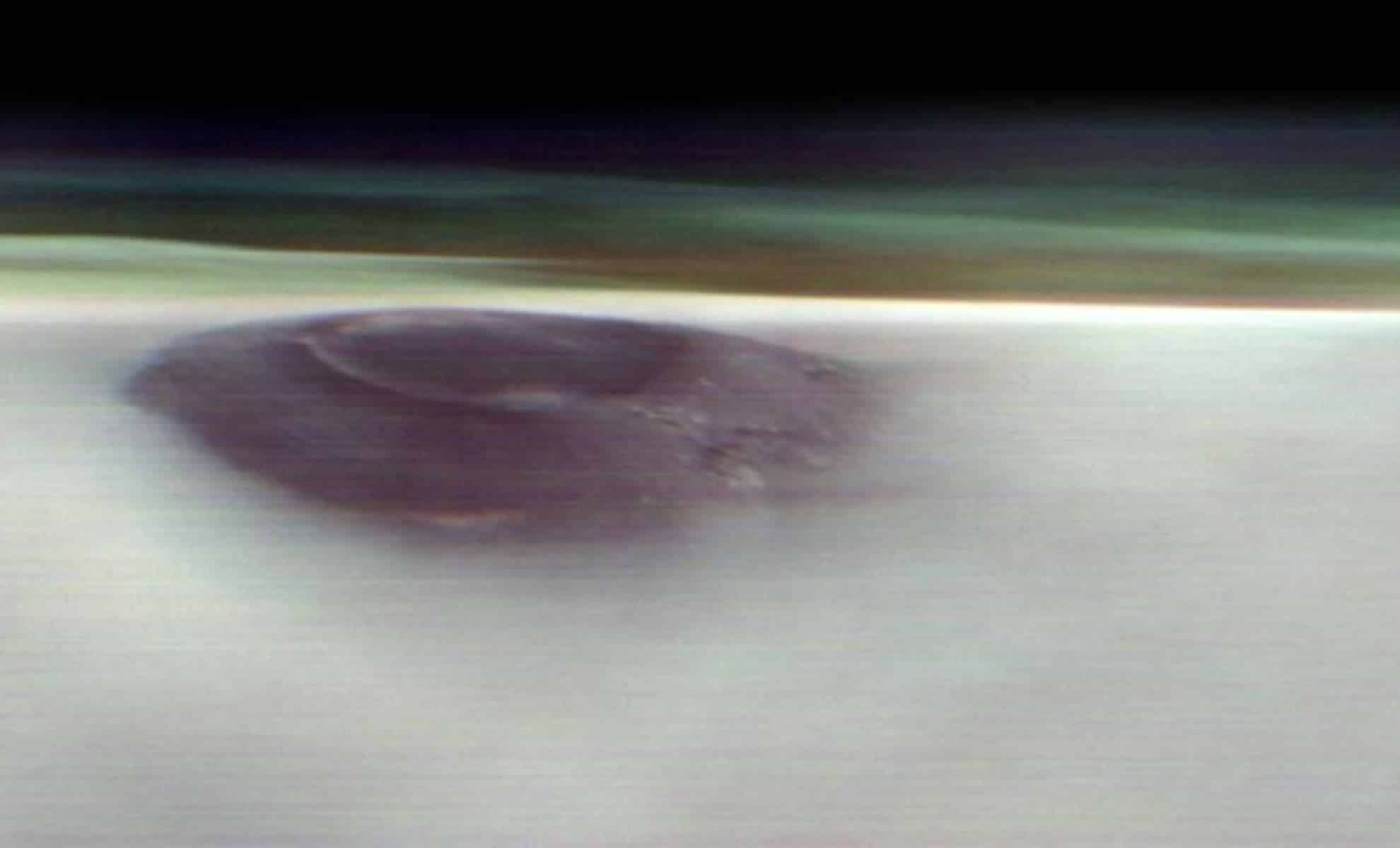
NASA Spots Strange Towering Shape Breaking Through Mars’ Atmosphere
How did your country report this? Share your view in the comments.
Diverging Reports Breakdown
NASA Spots Strange Towering Shape Breaking Through Mars’ Atmosphere
A new image from NASA’s Mars Odyssey orbiter reveals an extraordinary sight: a massive formation breaking through Mars’ early morning cloud cover. Taken just before dawn on May 2, 2025, the photograph offers an unprecedented view of the Martian horizon. It is the first time a feature of this scale has been seen from orbit rising above the clouds, offering a perspective normally associated with Earth-based spaceflight. The image is part of an ongoing effort to study Mars’ upper atmosphere across different seasons. By monitoring these changes, researchers can better understand long-term climate behavior and its impact on surface conditions on the Red Planet. The images were captured by rotating the spacecraft 90 degrees in orbit, allowing its camera to observe the edge of the Mars atmosphere instead of the ground below. The dynamic behavior of the clouds hints at a planet in constant atmospheric motion, which could help scientists better understand the planet’s climate.
A Towering Shape Emerges From the Martian Haze
In the image, a single massive peak emerges from a blanket of clouds that hover low over the Martian surface. The formation, located in Mars’ Tharsis region, appears to pierce the upper atmosphere like a sentinel at the edge of the world. The clouds surrounding it are composed primarily of water ice, which forms in the cooler temperatures of early morning. The visual contrast—between the pale, luminous clouds and the dark structure rising above them—creates a scene that feels alien and almost otherworldly. Jonathon Hill, operations lead for Odyssey’s Thermal Emission Imaging System (THEMIS), commented, “We picked this location hoping we would see the summit poke above the early morning clouds. And it didn’t disappoint.”
Arsia Mons is the southernmost of the three volcanoes that make up Tharsis Montes, shown in the center of this cropped topographic map of Mars. Olympus Mons, the solar system’s largest volcano, is at upper left. The western end of Valles Marineris begins cutting its wide swath across the planet at lower right.
Credit: NASA/JPL-Caltech
A Seasonal Shift Unlocks New Atmospheric Clues
The image is part of an ongoing effort to study Mars’ upper atmosphere across different seasons. Since 2023, Odyssey has been capturing high-altitude views of the Martian horizon, offering insight into cloud dynamics, dust patterns, and the layering of the atmosphere itself. These observations are helping scientists track how the Red Planet’s weather evolves over time. “We’re seeing some really significant seasonal differences in these horizon images,” said Michael D. Smith, planetary scientist at NASA’s Goddard Space Flight Center. “It’s giving us new clues to how Mars’ atmosphere evolves over time.” By monitoring these changes, researchers can better understand long-term climate behavior and its impact on surface conditions.
Arsia Mons, an ancient Martian volcano, was captured before dawn on May 2, 2025, by NASA’s 2001 Mars Odyssey orbiter while the spacecraft was studying the Red Planet’s atmosphere, which appears here as a greenish haze. come
Credit: NASA/JPL-Caltech/ASU
Cloud Formations Reveal a Planet in Motion
The rising structure is frequently surrounded by dense morning clouds—particularly during Mars’ aphelion, the point in its orbit when it is farthest from the Sun. During this period, a broad band of clouds stretches around the planet’s equator, known as the aphelion cloud belt. These clouds form as moist air ascends over high terrain, cools rapidly, and condenses. The newly released image captures this process in dramatic detail, with the formation pushing through the uppermost layer of atmosphere like an island in a sea of fog. Though the feature is stationary, the dynamic behavior of the clouds hints at a planet in constant atmospheric motion.
A New Role for a Veteran Spacecraft
Odyssey’s THEMIS instrument, originally designed for surface imaging, has proven increasingly valuable for atmospheric studies. It can detect visible and infrared light, allowing it to analyze temperature variations, identify subsurface water ice, and even study Mars’ two moons, Phobos and Deimos. These capabilities have enabled the long-running spacecraft—now the oldest operating mission at Mars—to adapt to new scientific goals. By observing the horizon instead of the surface, THEMIS is contributing to a deeper understanding of the Martian climate system, and capturing views that were once considered out of reach.
Source: https://dailygalaxy.com/2025/06/nasa-towering-shape-mars-atmosphere/
